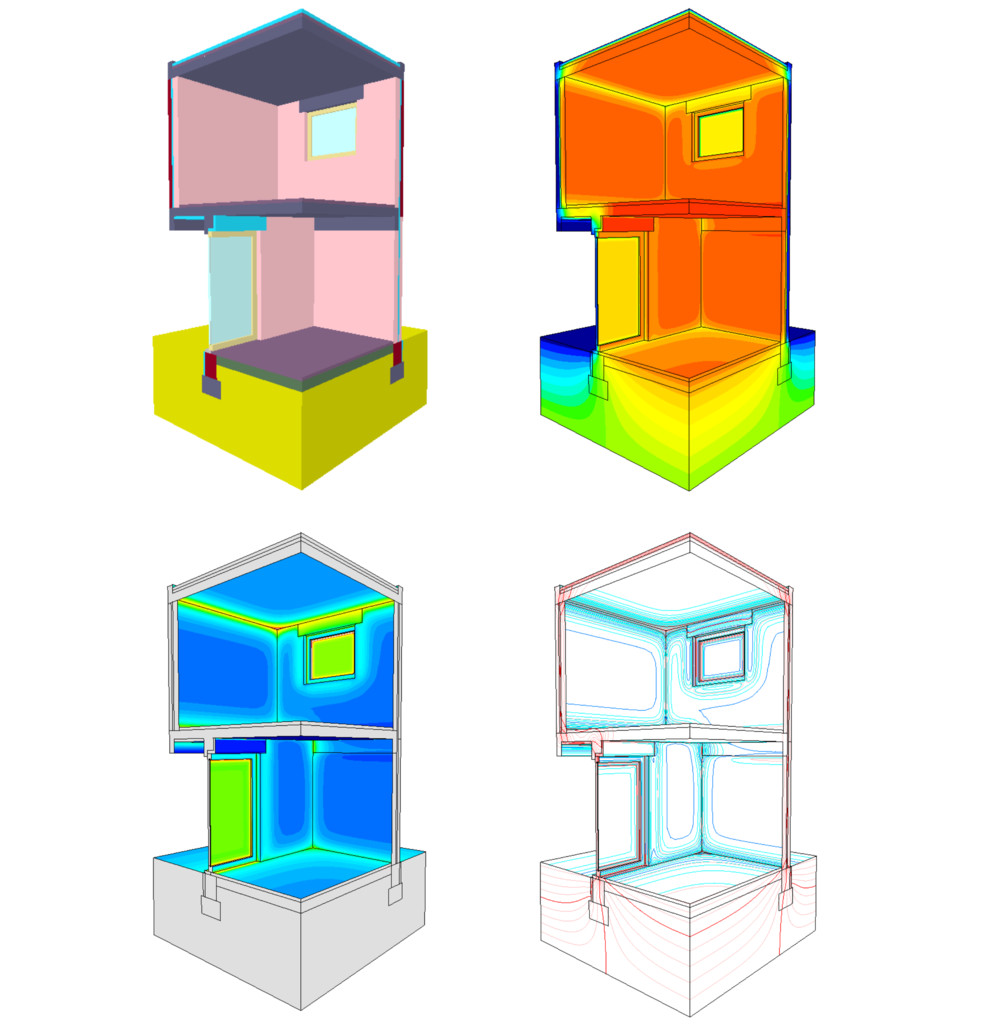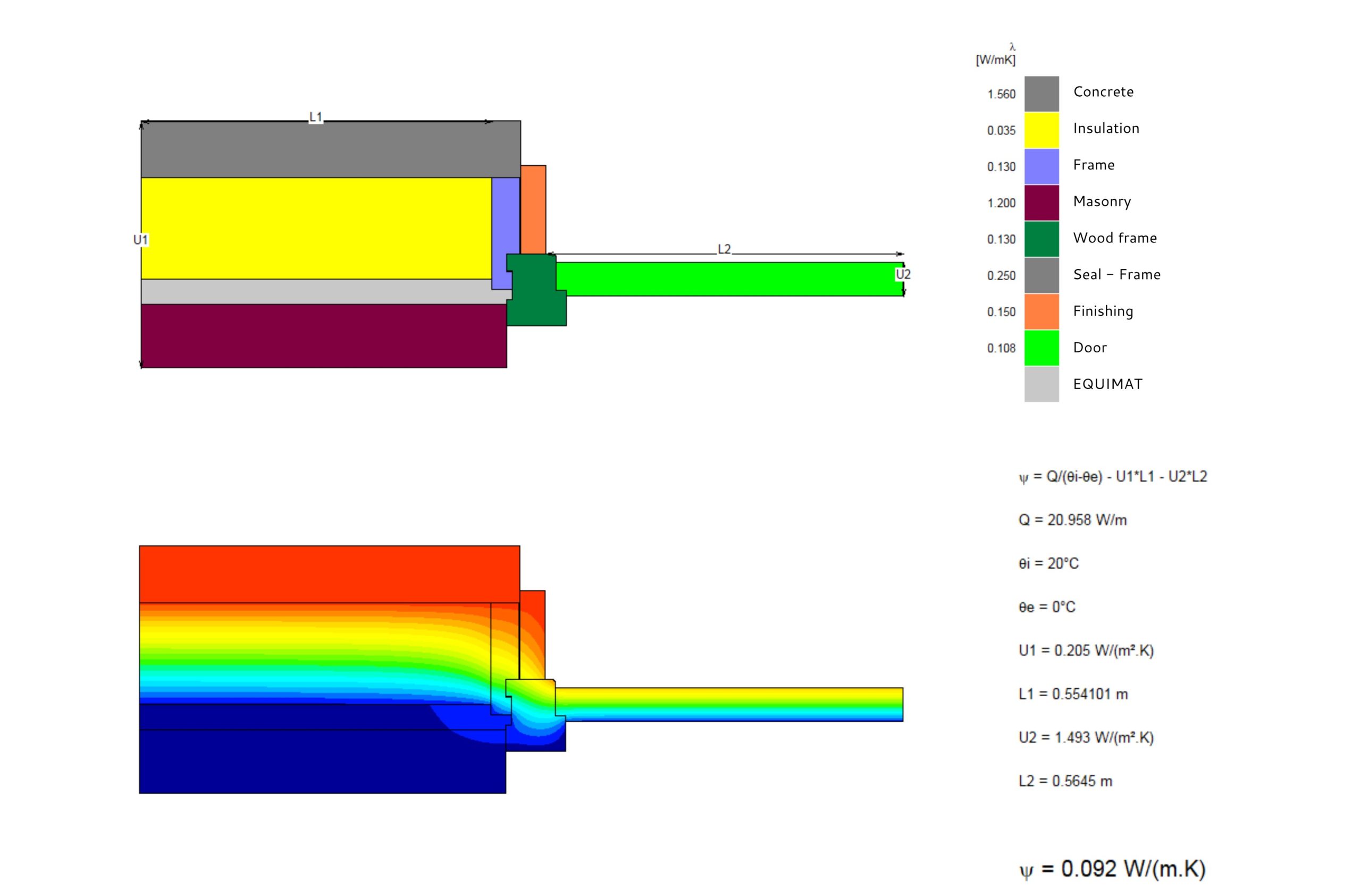Thermal Bridges
Thermal bridges are a common source of heat loss, and internal condensation, which can lead to moisture issues and mold growth over time. They can also hinder the efficiency of mechanical heating and cooling systems.
Using the software TRISCO, we analyze designs and constructions in both 2D and 3D to identify and assess thermal bridges. During the design phase, construction details can be evaluated to detect and mitigate potential thermal bridges. Similarly, when retrofitting existing buildings with insulation, the risk of thermal bridges can be assessed and addressed to improve overall thermal performance.

Image credit: TRISCO: steady-state 3D - orthogonal | Physibel. (n.d.). Physibel. https://www.physibel.be/en/products/trisco

Internal condensation in structures is one step further from identifying thermal bridges. It is used to assess the risk of surface condensation or mold growth near a thermal bridge. This is especially useful in spaces with high humidity levels (such as swimming pools), and in regions with variability in temperatures and humidity levels. Improving a building to address these factors has a positive impact on the structure’s thermal envelope, reducing operational costs long term.
Thermal bridges, heat loss prevention, internal condensation, moisture issues in buildings, mold growth prevention, thermal bridge identification, TRISCO software for thermal analysis, 2D and 3D thermal bridge assessment, construction design analysis, mitigating thermal bridges, retrofitting buildings with insulation, thermal performance improvement, surface condensation risk assessment, humidity level impact on buildings, condensation in high-humidity spaces, swimming pool condensation control, temperature and humidity variability in buildings, improving thermal envelope, reducing operational costs, building thermal efficiency, thermal insulation solutions, condensation risk evaluation, thermal bridge mitigation strategies, energy-efficient building design, moisture control strategies, mold prevention solutions, high-performance building envelope, building envelope optimization, sustainable building design, long-term building performance, energy loss reduction, building insulation improvements, thermal bridge detection tools, thermal envelope improvements
